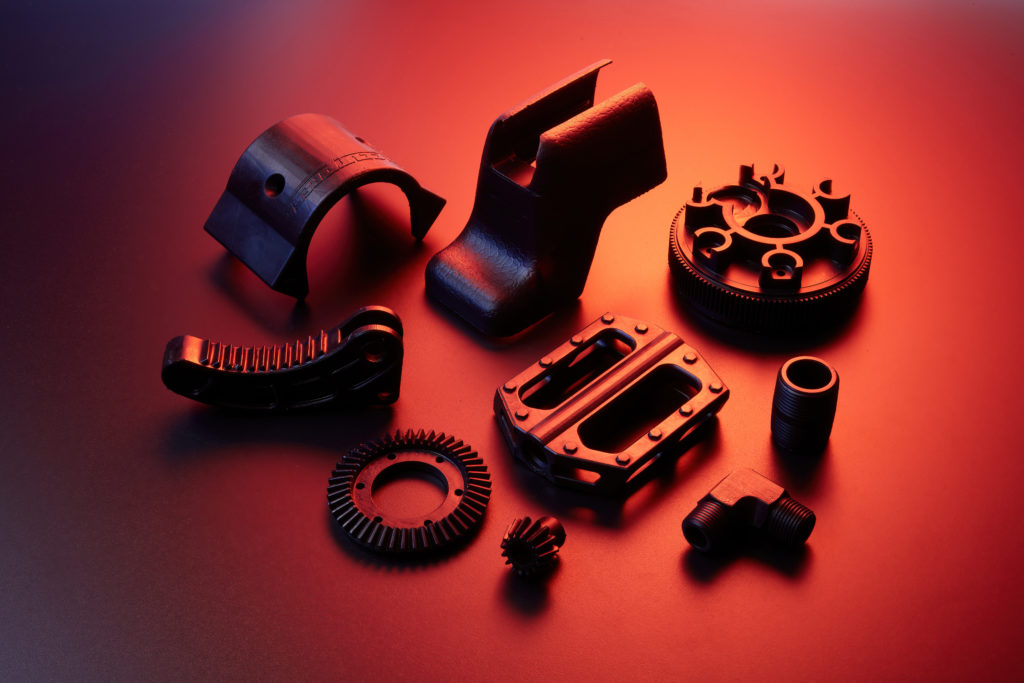Formlabs released two new polyurethane resins, PU Rigid 650 and PU Rigid 1000, for its Form 2, Form 3, Form 3+, Form 3B, and Form 3B+ printers. These materials are meant to be tough and impact-resistant for use in a number of industries, ranging from medical to automotive and consumer goods. The company expects the 650 variant to be used primarily for connector components, like hinges and snap fits, as well as impact-resistant parts, such as wheels, bumpers, and grommets. The 1000 variant is designed for use in jigs and fixtures, castings, enclosures, and sturdy consumer products, including bottle caps, buckles, and bike pedals.
Applications made with Formlabs’ new resins. Image courtesy of Formlabs.
“We’re thrilled to debut these innovative polyurethane resins as we continue to expand our materials library and unlock new possibilities with 3D printing. PU Rigid 650 Resin and PU Rigid 1000 Resin build upon the existing capabilities of Formlabs’ SLA printers to provide manufacturers, engineers, and product designers with the ability to produce polyurethane parts that can withstand extreme manufacturing environments and design requirements,” said Formlabs Chief Product Officer Dávid Lakatos.
We must point out that you should be careful when breathing in polyurethane fumes as they could have far reaching damaging health effects. In addition, skin contact with uncured polyurethane may also result in adverse health effects, and the material is a probable human carcinogen. So please be careful out there, kids.
Formlabs PU Rigid 1000. Image courtesy of Formlabs.
Semi-rigid materials have generally been a problem for 3D printing, so this is a welcome addition to the 3D printing arsenal. Soft materials and comfortable ones also always have had the issue that they easily wear and break down, so that as an option is also a very welcome development. Think of applications such as braces or immobilisation devices for patients. Also, consider sports equipment that can now be customized. I’m not sure what kind of skin contact approvals they have on the new feedstocks, but PU is very safe once it has been cured. So, with the proper approvals, this opens up a lot of applications and possible uses for 3D printing.
As I’ve stated before, I’m skeptical about thermosets in end-use applications unless they can not be avoided. However, with something like this being made available on quite a sizeable installed base of 3D printers, you do have to think that people will try to do this eventually. Mass customisation in the interior components of assemblies, handles, sports gear, and steering wheel inserts has really been held back because we can’t make long-lasting comfortable components with 3D printing. In these kinds of areas, materials like these could perhaps play a role.
If this isn’t the case, then still, it will be an advantage as a prototyping tool. PU is a widely used material, and, in form-and-fit testing prototypes, snap-fit and a little give will contribute a lot of realism. These kinds of parts can really trigger your responses and imaginations in a tactile way, much better if they approximate their end-use materials. If you’d like to see the materials, you can visit Formlabs at the RAPID+TCT event in Detroit, Michigan, at booth #2608.
